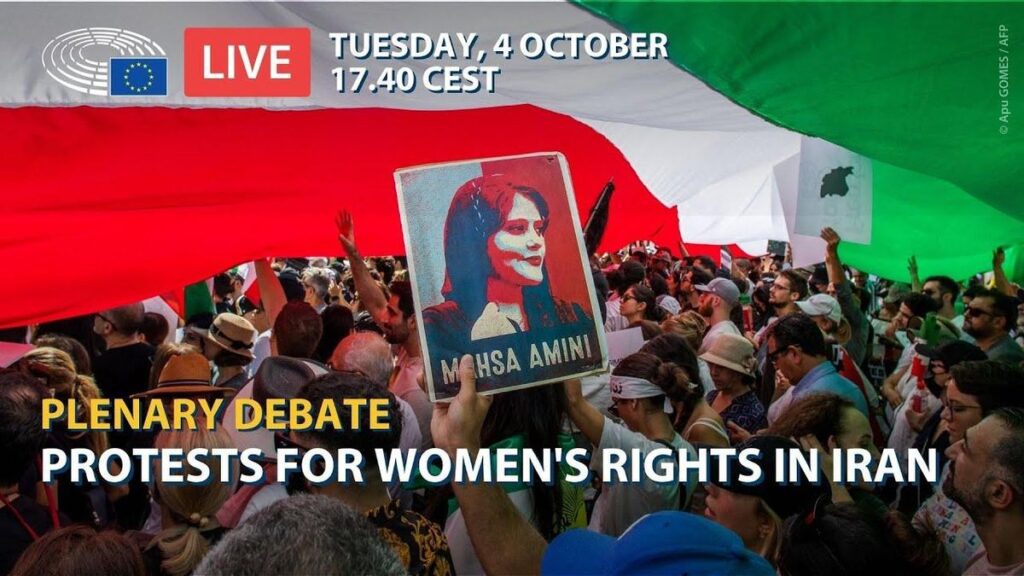Empowered Voices: The Resilience of Iranian Women in the Face of Oppression
Protests have erupted once again in Iran, capturing global attention as courageous women rise against oppressive laws and societal expectations. Inspired by the heartbreaking story of the late Iranian journalist Kianoosh Sanjari, activists are fervently pushing for essential personal rights, particularly regarding the increasingly contested mandatory hijab laws.
A Call for Change
Sanjari’s tragic passing has intensified the demand for reform. Just days prior to his suicide, he publicly declared on social media that he would take his life if four imprisoned activists were not released by Wednesday evening. This devastating act highlighted the severe risks that journalists and rights advocates face under an oppressive government. The international community, including the U.S. Special Envoy to Iran, has pointed to Sanjari’s death as a reflection of the regime’s brutal tactics. Abram Paley, the envoy, denounced the “barbaric violations of human rights,” stressing that the regime repeatedly arrested and tortured Sanjari for his journalistic endeavors and amplifying calls for the release of all political prisoners.
The Legacy of Defiance
This somber incident has not only shaken the nation but has reopened deep wounds regarding past abuses faced by those who dare to challenge the status quo. Sanjari endured multiple imprisonments from 1999 to 2007, where he faced solitary confinement and psychological torment. Although he fled Iran, he returned years later, only to be sentenced to eleven years for his renewed activism advocating for human rights.
Courage Under Pressure
In response to the protests, the Iranian government has intensified its crackdowns, exemplified by the arrests of individuals protesting for their rights. Notably, security forces have aggressively suppressed dissent, even arresting activists who attempted to attend Sanjari’s burial. Iranian women’s struggles have been vividly encapsulated in a viral video showing another woman, during her detention, stripping down to her underwear to protest the stringent Islamic Republic dress codes. This act of defiance has sparked conversations on bodily autonomy and the oppressive nature of mandatory hijab laws, highlighting the growing courage among Iranian youth.
Solidarity Amidst Repression
Arrests during these demonstrations have surged, with users on social media platforms demanding clarification on the status of detained activists, expressing solidarity with those combatting systemic oppression. Protesters are increasingly willing to confront authorities regarding their personal freedoms, demonstrating resilience in the face of governmental backlashes.
A Call to Action
Human rights organizations are urgently demanding accountability, issuing statements that condemn the systemic oppression faced by journalists and activists. Groups like Reporters Without Borders (RSF) label Iran as one of the most perilous nations for journalists, drawing attention to the severe toll that ongoing harassment has on their mental and physical well-being. The push for independent investigations and accountability resonates deeply against the backdrop of Sanjari’s heartbreaking narrative.
Collective Consciousness Awakens
The memories of Sanjari and courageous acts of protest, such as the student rallying on campus, have invigorated a collective awareness within Iranian society. Citizens are increasingly emboldened to raise their voices, often risking imprisonment, to address issues of justice, human rights, and societal norms. While fear lingers, it has not quelled their determination.
Unity for Change
Strikes and protests calling for change continue to swell across Iran, as various sectors unite to voice their discontent with not only hijab laws but broader governmental oppression. This movement transcends mere clothing regulations, delving into deeper issues of freedom, surveillance, and basic human dignity.
A Broad-Based Movement
The protests are not confined to women; they garner support from diverse demographics reflecting shared frustrations within Iranian society. This illustrates the pervasive sentiments of injustice and oppression that resonate across gender boundaries, indicating a collective demand for change.
Creative Acts of Defiance
In a dynamic display of rebellion, individuals are discovering inventive ways to express their dissent against the regime. A wave of solidarity among activists and ordinary citizens underscores both the urgent need for reform and the necessity for global awareness to bolster these voices. Online narratives have transformed personal stories of suffering and protest—like those of Sanjari and the woman arrested for her demonstration—into powerful tools against repression.
The Global Perspective
The momentum fueled by grassroots solidarity is met with government attempts to stifle conversations around dissent, yet the cracks in the regime’s authority continue to widen. The challenges faced by those advocating for change are monumental, yet they inspire increased resistance among others.
A Collective Hope for Justice
As these events unfold, the global community observes with anticipation. The interconnections between uprisings, protests, and subsequent crackdowns under the oppressive Iranian government incite concern and stimulate discussions worldwide. Activists and advocates for human rights persistently call for broader international backing to combat injustice and empower movements fighting for equality.
While the path to equitable rights is fraught with challenges, the voices of the Iranian people are becoming increasingly difficult to silence. Each incident, from Sanjari’s tragic ending to the bold protests, encapsulates the struggles and endurance of those in Iran yearning for freedom and human rights.


